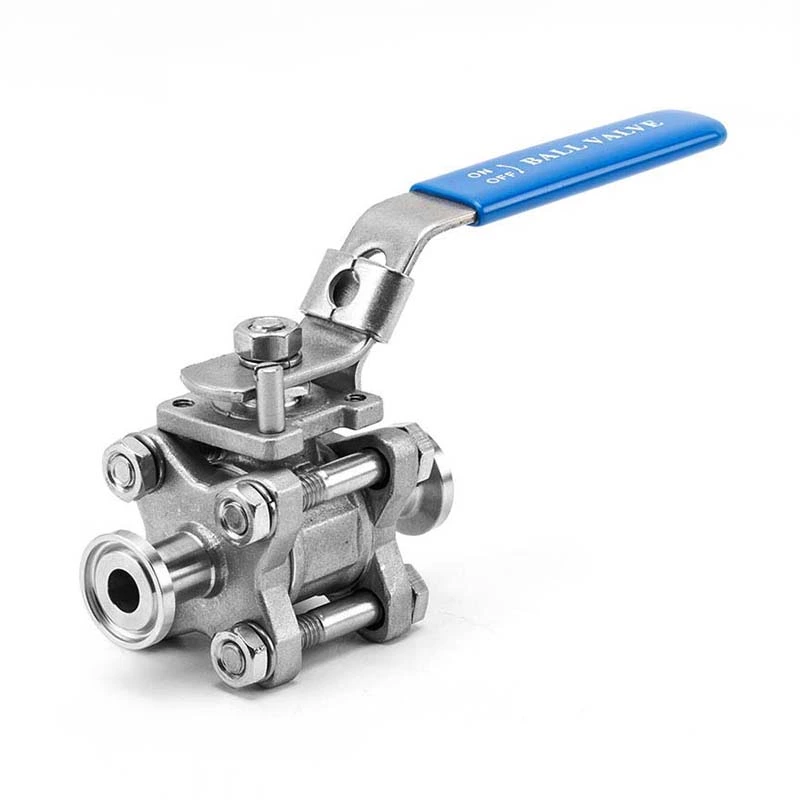Process Principle Of Sanitary Ball Valve Equipment
The Sanitary Ball Valve device is a valve widely used in sanitary industrial systems. Its key features are strong sealing performance, high cleanability, and excellent fluid control capabilities. This article will provide a detailed introduction to the process principles of sanitary ball valves.
Overview of Sanitary Ball Valves
Sanitary ball valves are valves that use a ball as a fluid control element. They feature a simple construction and reliable performance, effectively controlling the flow of liquids, gases, and steam. Due to their compact structure, smooth surface, and ability to effectively control fluid flow, they are widely used in sanitary industrial systems, particularly in industries such as pharmaceuticals, manufacturing, food processing, and healthcare.
During the production and use of sanitary ball valves, it is important to pay attention to key technical parameters, such as ball-center distance, valve diameter, and connection method. These parameters can affect the fluid control and sealing performance of sanitary ball valves. Therefore, when designing and selecting sanitary ball valves, it is important to consider the actual application scenario and fluid control requirements to ensure they meet production needs. The process principle of sanitary ball valves
The process principle of sanitary ball valves primarily involves three aspects: the structure and materials of the ball, the valve's opening and closing mechanism and function, and the valve's fluid flow control mechanism.
Structure and Materials of the Ball
The core component of a sanitary ball valve is the ball. The ball is typically made of materials such as stainless steel, carbon steel, or plastic, offering excellent corrosion resistance and mechanical strength. Ball structures are generally classified into three types: full-pass, flat-end, and V-port. The full-pass ball structure is suitable for applications requiring high flow control, while the flat-end and V-port ball structures are suitable for applications requiring precise flow and pressure differential control.
Valve Opening and Closing Principle and Function
The opening and closing principle of sanitary ball valves is based on the rotation of the ball, which allows fluid to flow or blocks the pipeline by rotating at different angles. Valve opening and closing control is typically achieved via a handle, pneumatic operation, or electric operation. During the valve opening and closing process, the ball seals against the valve seat to control fluid flow. The Fluid Flow Control Principle of Valves
The fluid flow control principle of sanitary ball valves is based on the rotation and localized contraction of the ball, which is influenced by the valve diameter and the fluid pressure differential. As the ball rotates, it creates undulations on its rotating surface. This localized contraction simultaneously slows or accelerates the fluid flow, thereby controlling both flow and pressure differential.
Sanitary ball valves are characterized by their high cleanability and corrosion resistance while maintaining fluid control. During use, they require frequent cleaning and disinfection to ensure they meet strict hygiene standards. Furthermore, valve maintenance and inspection are crucial, requiring regular inspection and maintenance to ensure proper operation and longevity.
Summary
Sanitary ball valves are a vital component of sanitary industrial systems. Before use, it is important to consider the specific application scenario and fluid control requirements and select appropriate technical parameters. Furthermore, during use, proper cleaning, disinfection, and maintenance are essential to ensure proper operation within strict hygiene standards. This article provides a detailed introduction to the process principles of sanitary ball valves, hoping to provide guidance and assistance to practitioners.
